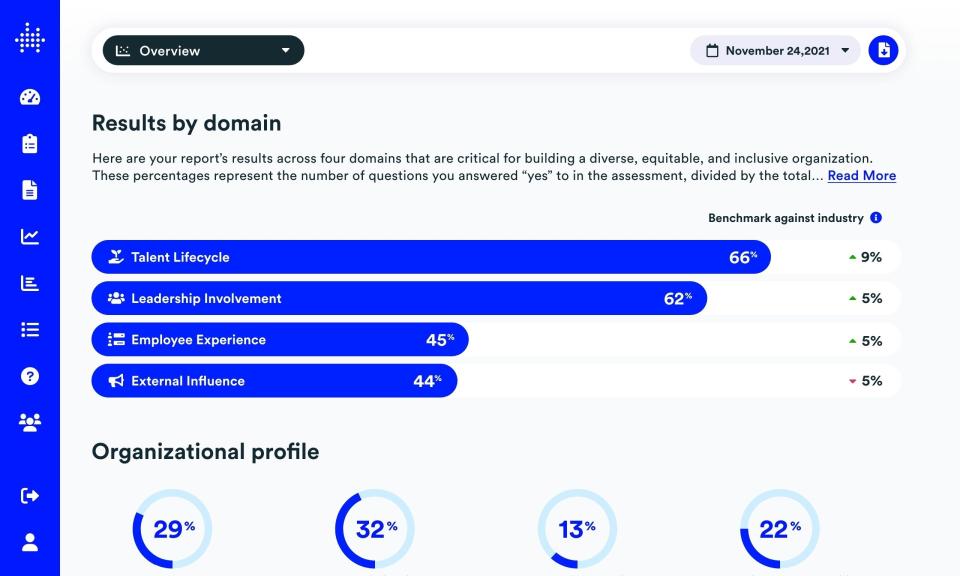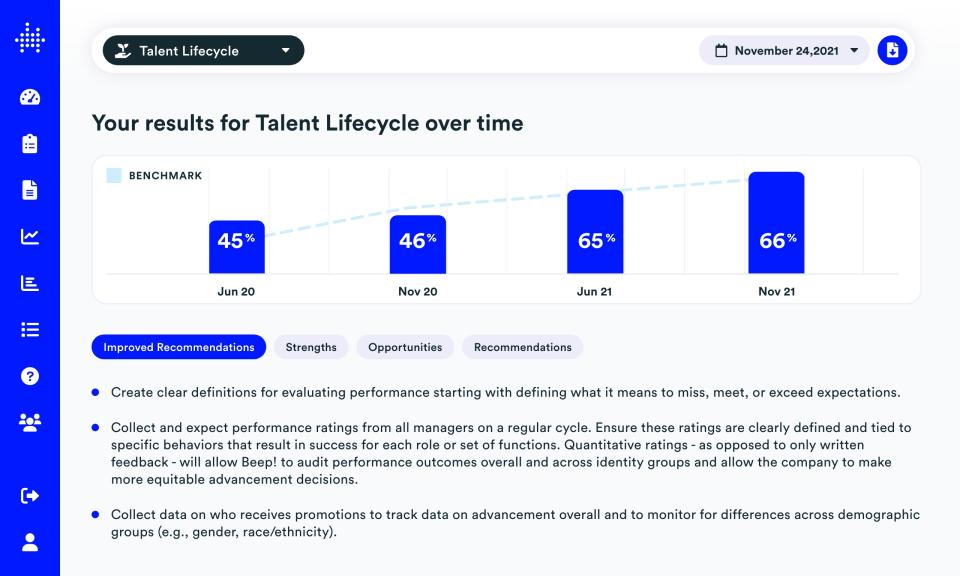Paradigm shifts your DEI efforts from aspirational to data-driven
Research suggests that most companies want to do the right thing when it comes to diversity, equity and inclusion (DEI). Executives certainly understand that bringing in a variety of voices, experiences, backgrounds and cultures can improve an organization in myriad ways beyond the bottom line, making their companies stronger and their products appeal to a broader audience.
Yet, as with anything in a business, you have to measure your current state to see where you need to improve. Paradigm, which helps companies analyze their DEI efforts, released a tool called Blueprint last year that provides a way to have an honest, data-driven conversation about where your organization currently stands and where it needs to get better to more closely align with a company’s stated goals and values.
Paradigm is not alone in this space, which includes startups like Diversio, Kanarys and Included. There are also broader HR platform players, which tend to look at diversity through a hiring lens such as Greenhouse Software, a company that's raised $110 million, according to Crunchbase data.
I spoke to Paradigm co-founder and CEO Joelle Emerson about the company, the product and why she thinks it’s important to give companies tools to evaluate their DEI efforts.
Measure twice, cut once
Emerson says that when she and her co-founders, managing directors Carissa Romero and Natalie Johnson, launched the company in 2014, they wanted to find a way to focus diversity efforts on data instead of intuition or aspiration.
“When Paradigm got started about eight years ago, we didn't know if we would ultimately build technology, or what we would be doing, but what we wanted to do was figure out how we could take a more data-driven and evidence-based approach to diversity, equity and inclusion,” Emerson told TechCrunch.
She believes most companies want to do the right thing, but they don’t have the information to evaluate their efforts. “I think if you told most leaders at most companies that they could snap their fingers and tomorrow they would be more diverse and equitable and inclusive, they would do it,” she said.
“The challenge is that it actually requires data to understand what you should be doing…Part of what's so powerful about having data and having benchmarks is it gives you the ability to track progress over time.”
Paradigm launched Blueprint last year as a way to help companies have a more numbers-driven approach to their DEI efforts, while giving them a plan to move forward with more concrete measurable ideas and goals.
“With Blueprint, we’re assessing their DEI maturity across these four domains of inclusion -- talent lifecycle, employee experience, leadership involvement and external influence -- that we found are critical. And then more importantly, we're allowing them to benchmark themselves and track progress over time,” Emerson explained.

Blueprint report showing scores and benchmarks against industry. Image Credits: Paradigm
Blueprint involves two key steps. First, the company imports human resources information, and the software uses this information to generate charts and graphs related to your current DEI state.
The second step involves a self assessment where they take a more detailed look at processes concerning recruiting, onboarding, performance management and promotions. “This assessment is where we are looking at your DEI maturity. So this is not just about demographic data, we're actually looking at a number of different variables that give us insight into your DEI maturity,” she said.
The questions are not one size fits all. “If you're a private equity firm or venture capital firm, we might be talking about how you think about companies you're investing in and how you support your portfolio. If you are a big corporation, we might be asking you about supplier diversity or corporate social responsibility efforts. And then leadership involvement is around how actively engaged your leaders are and your DEI efforts. And so each of these has a number of questions that inform your overall score,” she said.
Once the software collects and compiles the data, you get a set of scores and recommendations. “We highlight strengths and opportunities, and then we actually provide specific recommendations. And for many of these recommendations, where we found people need concrete help implementing them, we also provide pretty robust resources on exactly how to take action on each recommendation.”
Putting ideas to work
A report released last year from RedThread Research called DEIB Tech 2021 Overview indicated that DEI assessment software was a growing market with a global market size of $313 million at the time of the report, up from $100 million from 2019. That encompasses more general HR software that often includes DEI assessment tooling, and more targeted tools like the one that Paradigm offers.
That said, the total number of HR tech vendors offering DEIB assessments in their platforms increased 136% since 2019. The idea is to give companies actionable information around their DEI efforts so they can monitor their efforts and continue to improve.
Emerson pointed out as an example that if you see it simply as a numbers problem, and focus on hiring, you may miss that you have a high attrition rate among the very people you are trying to hire and retain.
“We help you very simply visualize how both hiring and attrition are contributing to the representation you have today. So essentially, it's an analytics and strategy platform that allows organizations to build, benchmark, execute and track so that you really have no excuse for being in the same place one or two years from now that you're in today. The platform is showing you exactly what you're doing and how you're doing it,” she said.

Blueprint scores in Talent Lifecyle, with suggestions for improvement. Credits: Paradigm
The company started with a consulting and training approach. While they still offer these services, they recognized that they were building this body of knowledge internally, and began exploring the idea of building a tech platform that could incorporate their learnings.
“We started out for the first few years doing really in-depth consulting. We have had and still have a team of data scientists, strategy consultants, and a lot of our folks who came from academia and researched these themes. We wanted to really try to identify the mechanisms that are standing in the way [of DEI efforts] and the things that drive progress,” Emerson said.
After working with more than a thousand companies, she said they learned a great deal about what worked and what didn’t, and it was at that point they decided to build Blueprint.
Ultimately this is about improving DEI performance, she said, and that often involves digging into social problems like unconscious bias or structural and systemic bias, things companies have trouble fixing on their own.
Emerson believes this isn’t just about business, it’s about companies being vehicles for social change by helping improve these same issues outside of work, and how these companies can influence society at large.
“We believe that if you build more diverse companies, more equitable companies, more inclusive companies, you're actually going to contribute to a more just world -- and that is why we exist.”

 Yahoo Finance
Yahoo Finance 